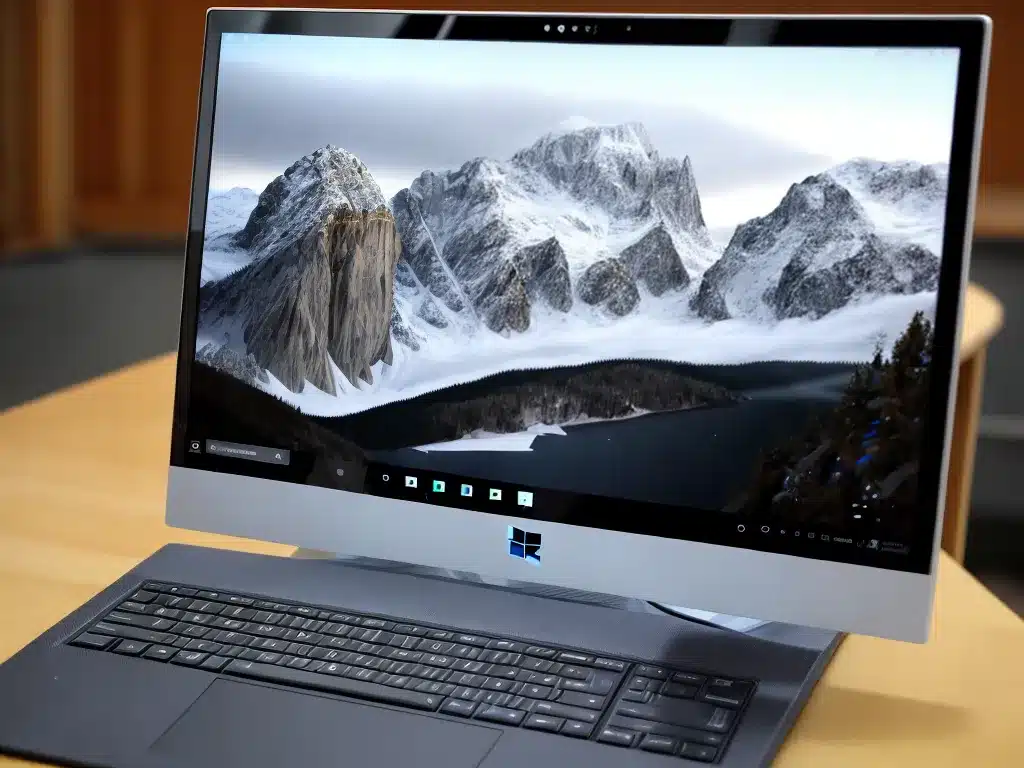
Introduction
Having multiple desktops in Windows 10 allows you to keep different windows and applications organized on separate desktop spaces, helping you stay focused and multitask more efficiently. Setting up multiple desktops is easy to do directly within Windows 10 without any additional software.
In this guide, I will walk through the steps to enable and configure multiple virtual desktops in Windows 10. I will cover topics such as:
- Understanding virtual desktops and how they work
- Enabling the feature in Windows 10
- Creating new desktops
- Switching between desktops
- Customizing desktops with unique backgrounds
- Moving apps between desktops
- Keyboard shortcuts for managing desktops
- Tips for using multiple desktops efficiently
After reading this guide, you will have a solid understanding of multiple desktops in Windows 10 and be able to set up and utilize virtual desktops to improve your productivity.
Understanding Virtual Desktops
Virtual desktops, also known as multiple desktops or workspaces, are distinct desktop environments that operate independently from each other within the same operating system.
With virtual desktops enabled in Windows 10, you can have separate desktops for different tasks or projects, each containing its own open windows and apps. For example, you could have:
- Desktop 1 for email, calendar, and communication apps
- Desktop 2 for researching a work project
- Desktop 3 for graphic design tools and files
- Desktop 4 for entertainment like games or streaming media
Switching between these desktops is fast and easy, allowing you to focus on one task while keeping other distractions out of sight but still accessible.
Virtual desktops help organize your various tasks and workflows while using the same physical monitor setup. They can help minimize distractions, avoid clutter, and boost productivity.
Enabling Virtual Desktops in Windows 10
Virtual desktops are disabled by default in Windows 10, so you will need to enable the feature to start using multiple desktops. Here are the steps:
- Open the Windows Settings app
- Navigate to System > Multitasking
- Toggle the switch for Use Task View button to switch desktops to the On position
- Under “Virtual desktops”, toggle the switch for Enable virtual desktops to the On position
That’s it! With this quick setting change, virtual desktops are now enabled in Windows 10.
Creating New Desktops
Once virtual desktops are enabled, you can start adding and creating new desktops. There are a couple ways to create a desktop:
- Open the Task View by clicking the Task View button on the taskbar or pressing Windows key + Tab
- At the top of Task View, click the New desktop button
- Right click an empty area of the taskbar and select New desktop from the context menu
A new blank desktop will be created and ready to customize and add apps. You can create as many desktops as needed – there is no limit. Each new desktop acts as a separate workspace.
Switching Between Desktops
With multiple desktops set up, you’ll want to easily switch between them to manage different tasks. There are a few quick ways to change the active desktop:
- Open Task View using the Windows key + Tab keyboard shortcut
- Click the desktop you want to switch to in the Task View interface
- Use the Ctrl + Windows key + Left/Right arrow keyboard shortcuts
- Click the desktop name on the far left of the taskbar
Jumping between desktops is fast and simple with these options. As you get accustomed to using virtual desktops, switching desktops will become second nature.
Customizing Desktops
To help keep desktops visually distinguished, you can customize them with unique wallpaper backgrounds.
To change the wallpaper on a specific desktop:
- Switch to the desktop you want to customize
- Right click the desktop and select Personalize
- Click Background and choose a background image/color you want for that desktop
- The wallpaper will now be associated with that desktop
Now when you switch desktops, the background will help identify which desktop you are currently viewing.
Moving Apps Between Desktops
To organize tasks and workflows efficiently with virtual desktops, you’ll need to move apps and windows between desktops. There are a couple ways to do this:
- Drag the app/window preview from one desktop to another in Task View
- Right click an app in the taskbar and select Move to > Desktop #
This allows you to get all the apps you need for a certain task on the appropriate desktop. You can also have apps open simultaneously across multiple desktops.
Keyboard Shortcuts
Utilizing keyboard shortcuts helps makes managing multiple desktops faster and more efficient:
- Windows key + Tab – Open Task View
- Windows key + Ctrl + D – Add new virtual desktop
- Windows key + Ctrl + Right/Left – Switch between desktops
- Windows key + Ctrl + F4 – Close current desktop
Learn these shortcuts to really optimize your virtual desktop workflow in Windows 10.
Tips for Using Virtual Desktops
Here are some tips to use multiple desktops effectively:
- Name your desktops descriptively based on their purposes
- Use dedicated desktops for specific tasks or projects
- Minimize open windows before switching desktops to reduce clutter
- Close desktops when you no longer need them
- Separate distracting apps like social media to focus better
- Use wallpaper customization to identify desktops visually
- Add desktop shortcuts for your most important apps
With some practice, using virtual desktops can become very intuitive. They provide valuable organization and productivity benefits.
Conclusion
Windows 10 makes great use of virtual desktops to help create separation between tasks while using the same overall computing environment. By enabling the feature, creating and customizing new desktops, moving apps between desktops, and utilizing keyboard shortcuts, you can experience the benefits of virtual desktops directly within Windows 10. Implementing multiple desktops can go a long way in helping minimize distractions, reduce clutter, separate contexts, and boost your productivity.












